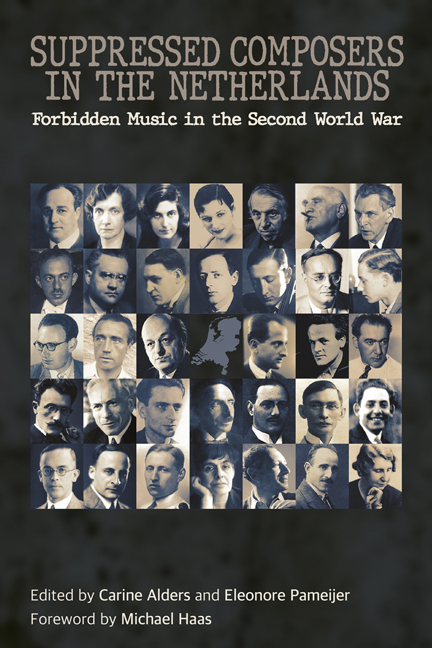7 - Marius Flothuis
Published online by Cambridge University Press: 09 May 2024
Summary
Marius Flothuis led an eventful life. He was politically aware and inclined to left-wing views from an early age. He lost his job at the Concertgebouw Orchestra when he refused to register with the Kultuurkamer, and was arrested for his involvement with the Dutch resistance. Imprisoned in Camp Vught and deported to Sachsenhausen in 1944, he survived its hardships and continued to compose. In the post-war Dutch and international music worlds he held numerous influential positions.
Born on 30 October 1914 in Amsterdam, Flothuis was raised in a well-to-do family. His father played the violin and as a child Marius loved listening to his mother playing Mendelssohn's Lieder ohne Worte on the piano. At around the age of six he learned the basics of piano-playing from his brother Joop, who was five years older. It was not long before he surprised everyone by playing Pleyel's Sonatina in D major. From then on, music never truly let him go. His piano teachers were his uncle George Hamel, Bé Boef, Arend Koole and Hans Brandts Buys. The latter, his music teacher at the Amsterdam Vossius Gymnasium, was a major influence and a stimulating mentor.
Flothuis was a timid, withdrawn boy, but his talents were gradually recognised at the Gymnasium. At fourteen, he surprised his piano teacher, Arend Koole, with his own cadenzas for Haydn's D major Piano Concerto and, soon afterwards, his cadenzas for some of the Mozart piano concertos. He often played the piano with his brother, mostly symphonic repertoire arranged for four hands. Joop introduced him to music by Debussy, Ravel and other French composers, which proved an enormous revelation.
Flothuis was fifteen when he first performed on the piano at one of the high school's musical evenings. Brandts Buys encouraged him to play the piano, arrange music and conduct the school orchestra. Flothuis was strongly influenced by contemporary composers and he attempted to emulate the string quartets by Hindemith and Milhaud, but these early effortswere soon consigned to oblivion. At seventeen, he passed his high school exams and the piano and theory exams of the Koninklijke Nederlandse ToonkunstenaarsVereniging (the Royal Dutch Musicians Association), his programme including Mozart – with his own cadenzas – and a composition by Willem Pijper.
- Type
- Chapter
- Information
- Suppressed Composers in the NetherlandsForbidden Music in the Second World War, pp. 85 - 92Publisher: Boydell & BrewerPrint publication year: 2024



